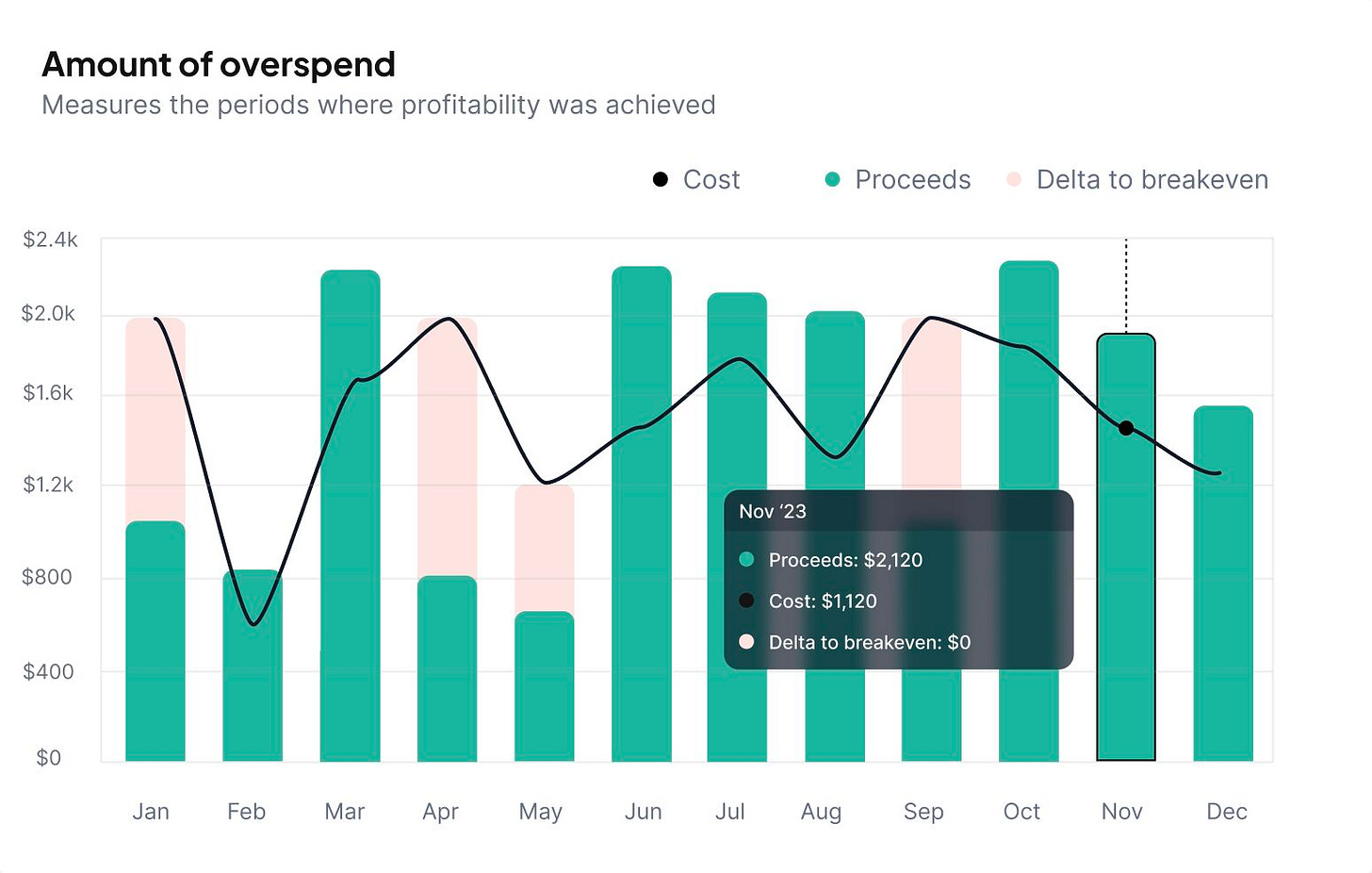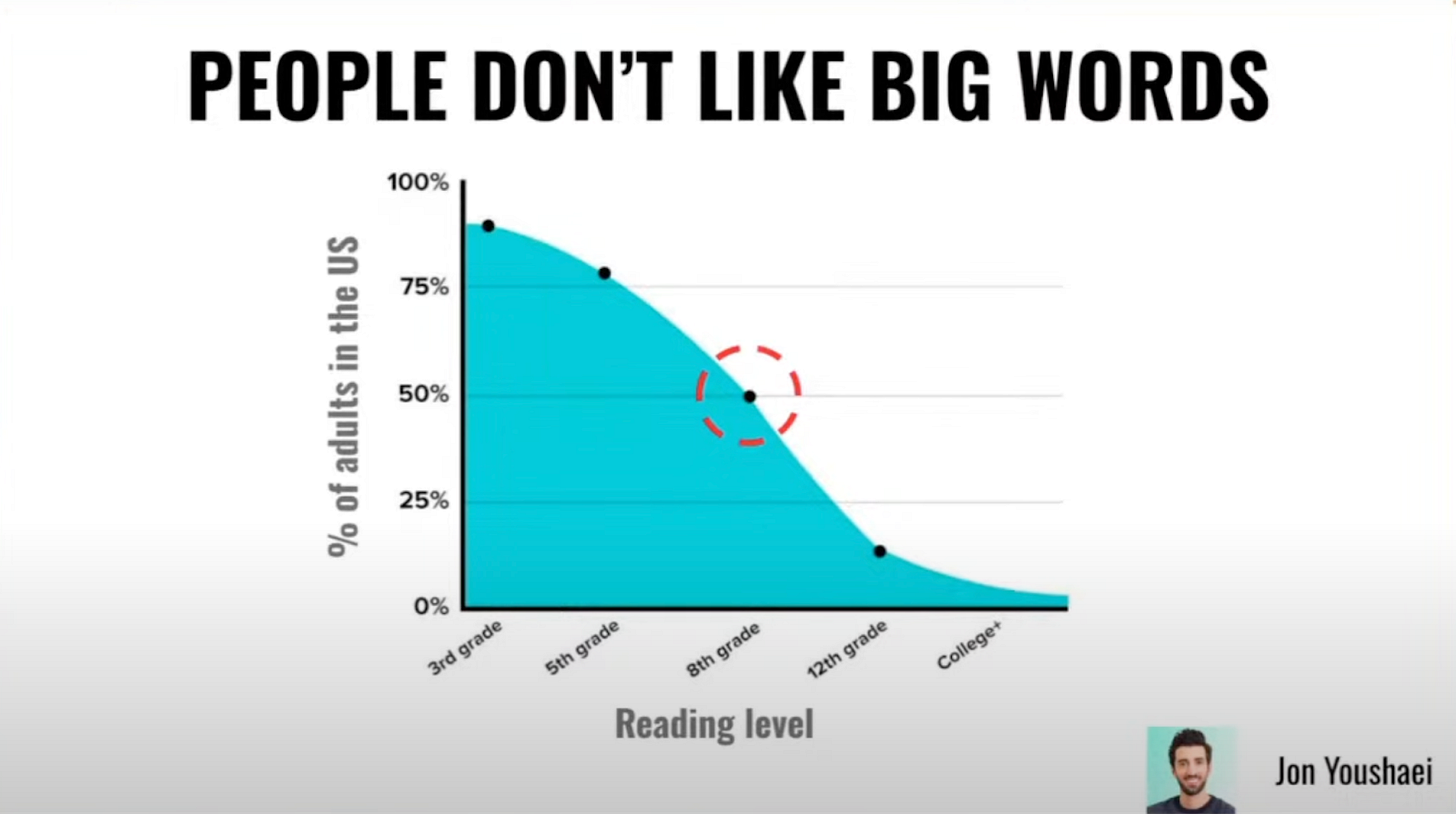💎 Growth Gems #107 - Paid UA, Creatives and Data Stack
Hey,
This week, I’m sharing gems on Paid Acquisition: data stack, SKAN, and creative testing.
These insights come from Lucas Moscon and Yuliya Lennox.
Enjoy!
🥇 TOP GEM OF THE WEEK
SPONSORED RESOURCE
I get excited when I see an announcement for a new content series.
And what better way to start a series than having Thomas Petit on for a chat on subscription app success?
I also had several interesting exchanges with Pablo Perez over the last few months (SKAN 4, AEM, Google Ads, etc.)…So this seems like a promising start!
I’ve been following content from the Admiral Media agency from the start (still looking forward to making it on the GrowBoat one day ⛵), and I’m confident this will also be great.
Save your spot today so you don’t miss out!
Paid acquisition: data stack, SKAN measurement, creative testing, managing campaigns
Gems from Lucas Moscon (Senior User Acquisition Manager at Monkey Taps) in Lessons From Spending $20M on Ads on App Masters
Lucas is among the few people who made my LinkedIn feed actually insightful last year.
I don’t think there’s been a week where he posted and didn’t end up in my #LinkedInGems selection (check it out; it’s a thing I share each Sunday).
Just like Thomas Petit, he’s another curious mind I’ll stalk the appearances of on podcasts/webinars.
While this discussion with Steve Young didn’t go into much detail on some topics, there are still some very valuable insights 💎.
💎 Focus on one network at a time in the beginning.
(06:25)
Lucas explained how he likes working with Meta when starting with paid UA. He also mentions he found success with static creatives.
His next favorites are TikTok, YouTube shorts, and Apple Search Ads. He gave bonus points to ASA if you have a specific niche or a location-specific service (Meta is not great for the latter).
I’ve also found ASA pretty expensive when you’re just starting (e.g., when you don’t yet have many ratings or social proof claims) and have to compete with more established apps that have their monetization sorted out.
Check out Lucas’ UA and ASO roadmap based on the MRR stages.
This is a great resource to decide on focus areas along with the Mobile Growth Stack (don’t forget monetization)!
Data stack & measuring performance
💎 On iOS, you can use Custom Product Pages in your paid acquisition campaigns as a proxy to measure proceeds from different cohorts. It’s an additional signal that can help you make decisions, even if you have an MMP. Example: ASA, Meta.
(07:20)
For ASA, you have several options to understand post-24-hour behavior since it is a different attribution than SKAN (AdServices): your MMP, your subscription management tool, etc.
For Meta, CPPs can be a good way to get a better sense of what happens after 24 hours for different campaigns or ads. Combined with SKAN 4, our understanding will get better.
💎 For most apps starting out, you don’t need to go with an MMP in the beginning. You can install ASA and Meta SDKs and don’t need an MMP for that. Once you start scaling, or with TikTok (SDK in beta), for most cases, you will require an MMP.
(10:30)
Lucas later shared that MMPs don’t actually attribute anymore; they just get the data and display it nicely for you (at a price 💸).
So his point is that you can do the same on your side, although he admits it won’t be easy.
The fact that it’s not easy is why I have a different take than him.
Technically, yes, you do not need an MMP. But if you don’t have one, you need the resources/skills/time to set up measurement yourself.
Plus, if you end up needing one anyway, you might as well start with one from the beginning and factor in the cost in your unit economics.
At least this feels true until there are better alternatives on the market. It doesn’t feel too hard to beat the SKAN dashboard of some MMPs.
💎 Try simplifying your SKAN schema structure; you don’t need to use all 63 bits. Example for sub app: 0 for install, 62 for start trial, and 63 for subscribe. Maybe email registration if it’s important to you.
(11:07)
KISS.
💎 Work with raw SKAN postbacks. Create a database on your server, and put the raw postback endpoint on your app. Every time your app initializes, Apple will send you the postback so you’ll be the ultimate source of truth. Your MMP should also have this function, but you’ll need to extract that through API.
(12:20)
What data do you get from this raw SKAN postback? Lucas shared with me the json example below, along with a description of the fields.
💎 You need to combine signals from different sources to see the full picture of the business and make the best decisions possible: Ad networks, MMP, SKAN, App Store Connect, and Product analytics. This is what UA/performance/growth people should do nowadays (not just look at the performance on a specific platform).
(15:55)
💎 The ideal data stack would be to have the proceeds from the stores, cohort them by new revenue or renewals, and import all the costs you are running from different ad networks so you can know whether you’re being profitable or not.
(22:15)
In one of his LinkedIn posts, Lucas shared a chart using App Store connect data to see your " overspend " amount.
It doesn’t serve the same purpose as a cohorted view, but it is a helpful perspective to ensure you stay positive (important caveat: Apple & Google don’t pay your proceeds right away).
Creative testing and campaign management
💎 Two levels of creative testing:
Initial testing to find the winning creatives amongst several creatives
Testing in your main campaign for the ads that pass threshold #1
(24:00)
And the same advice you’ve already read here a few times: if you don’t have a lot of money for creative testing, try to be bold: don’t run ads that are too similar and test different styles (AI ads, UGC, memes, etc.).
💎 If you need to get a return on your ad spend fast, avoid app install campaigns. You won’t see a good return. Go straight with “start trial” or purchases (a no-brainer if you’re in eCommerce).
(25:00)
Go big or go home, essentially.
There’s an argument for running an app install campaign first in order to find creative/messaging wins, but I agree with Lucas here: it’s often best to optimize for what you want (to the extent that SKAN allows you to).
Here’s why👇
💎 If you don’t have a lot of advertising budget, it’s better to consolidate campaigns and concentrate your spend over a shorter period because otherwise you won’t get enough data. You need to guarantee that the conversion value will not be null in the postback so that you see the post-install events you’re paying for.
(28:35)
💎 If you have an interesting volume on social media, you can validate some creatives on organic before pushing them on ad platforms. Example: TikTok -> boost with Spark Ads.
(29:50)
This has been an interesting trend for 2022-2023. Because people create content that feels more native to each platform (“Don't Make Ads. Make TikToks.”), there’s an opportunity to spot creatives in organic social media who could do well in paid acquisition.
💎 Google has two different ad networks for the SKAdNetwork program: Google and YouTube. Because YouTube is a different ad network and people use the app on their mobile devices most of the time (vs. Google where people search on the web), you’ll have almost all the postbacks with a deterministic attribution. So, if you force your campaigns to be video-only, you’ll see almost all your volume in your SKAN report.
(34:21)
Having video-only campaigns is one of the things that require having an account manager (who said they weren’t helpful?).
💎 Try showing two yearly options: one with a trial and one without (priced lower). This is great for cash flow but also because you can see revenue in the SKAN postback, which makes optimizing campaigns easier.
(42:22)
You’ll need to have that as part of your conversion schema to see the revenue.
So I took Luca’s own “SKAN 4.0 Builder” GPT to see what the recommendation would be (it did take some adjustments):
This also means that you need enough campaign volume to optimize just for the “without free trial” yearly plan, so it may not be something to try from the start (I know, I did say go big or go home earlier).
You’ll most likely see a different appetite for the “no trial” version in different countries.
How could the paywall look? Here’s an example (if you have more, hit me up):

💎 It usually doesn’t work to create separate ad sets to target specific placements (e.g., Reels vs. Facebook). It’s generally better to exclude specific demographics (e.g., < 18, 18-24).
(46:00)
If you don’t want to flat-out exclude specific demographics, or just more control, you can create a Python script to use “bid multipliers” (it can also work for country, gender, etc.).
💎 It’s hard to automate ad video production with AI for now, but you can already use AI for:
Voices (e.g., Eleven labs)
Database of video scripts
Trending sounds on TikTok
(49:35)
More gems on Paid Acquisition
Gems from Yuliya Lennox (CMO at Replika) in How to Scale ANY App to $1M a Month on App Masters
Here are some more gems on paid UA and creatives, also from an episode of App Masters (coincidence!).
💎 You have to choose the subscription mix that has a good fit with the marketing activities that you’re running. You might need to rollout changes for all users so that it positively impacts marketing, and this can take multiple iterations.
Example: for their Blush app they used the same thing as Replika (yearly plan) and it was not working. Then, they tried monthly and weekly and saw much better ROI.(07:15)
It’s all just about ARPU and ARPPU: finding the subscription mix that help you improve campaign optimization for your app can make a difference.
She later shared that optimizing towards a yearly subscription often makes sense to get money upfront but that for some apps, it doesn’t make sense to have a yearly price for customers. Sometimes, it’s better to have only 1 option.
💎 The performance you see when spending small budgets won’t be the same as once you scale, as the audience changes (the niche audience runs out). You can not use this to forecast growth.
(10:41)
💎 Look at the creatives from apps that have scaled UA successfully and look for patterns that you could use in your ads. Do what everybody else does first to see results quicker. This is particularly valid for non-UGC ads (which require a different approach).
(12:35)
💎 It’s not about static ad vs. video ad. It’s about the concept: understanding the audience and pushing the right buttons.
(22:40)
It was interesting to hear that she hates carousels, though! I’ve heard several times that they perform for some apps 🤷♂️
💎 People don’t like big words. 50% of people’s reading level in the US is below 8th grade. Always simplify your copy (you can use chatGPT for that).
(1:01:20)
Before I leave, here is a quote regarding the main topic of last week (the terms to link out to external methods of payment):
“The fees proposed for off-platform transactions by the platforms represent a Heads I Win, Tails You Lose proposition for developers” - Eric Seufert (independent analyst and investor)
See you next time.
Stay curious!
⛏️ Sylvain
🔗 Sources:

















